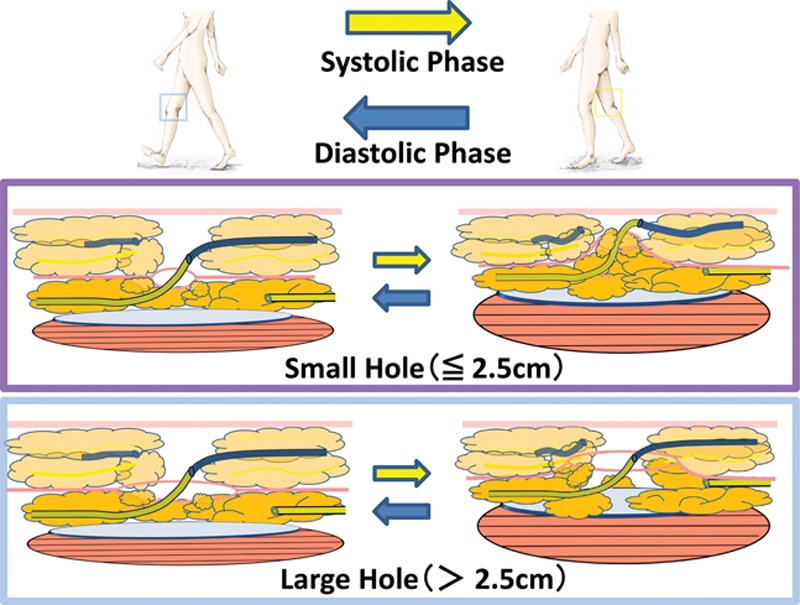Fig. 2.

Mechanism of the pumping system achieved by anastomosis created by means of the superior-edge-of-the-knee incision method. At the superior-edge-of-the-knee incision site in the distal medial thigh, knee joint movement works as a pumping system to propel lymph through the LVA during normal walking. Soft tissues around the incision point are gently compressed during knee flexion (systolic phase) and released during knee extension (diastolic phase). Only a small opening (less than 2.5-cm long) at the superficial fascia is important to activate the pumping system at the incision point. With a large opening at the superficial fascia, the lymphatic vessels are not strongly compressed between the superficial fascia and the deep fascia. (Partially adapted from Seki Y, Yamamoto T, Yoshimatsu H, et al. The superior-edge-of-the-knee incision method in lymphaticovenular anastomosis for lower extremity lymphedema. Plast Reconstr Surg. 2015;136:665e–675e.)
